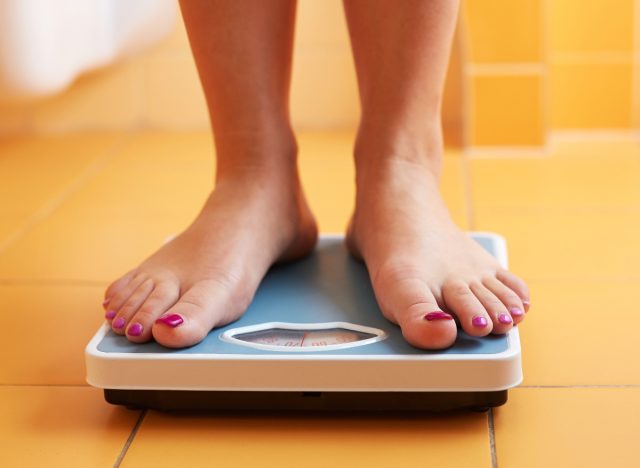Losing 20 pounds is a common goal, but it can initially seem daunting. Over the past decade as a personal trainer, I’ve worked with countless clients who’ve walked into the gym eager to shed weight but unsure how to do it effectively. I’ve seen firsthand how overwhelming it can be to navigate the sea of workout trends, diet advice, and conflicting information. That’s where having a solid plan—and sticking to it—makes all the difference.
One thing I’ve learned from my years in the industry is that no two journeys are alike. Some clients need a heavy emphasis on nutrition; others must focus on building strength to rev up their metabolism. The key is creating a customized plan that fits into your lifestyle, not vice versa. My most successful clients didn’t rely on quick fixes; they achieved lasting results through consistency, balance, and gradual changes that stuck long after the 20 pounds were gone.
In this guide, I’ll break down the most effective steps to help you lose 20 pounds in a healthy and sustainable way. These are the same methods I’ve used to help clients reach their goals and keep the weight off. So whether you’re just starting out or need a refresher, these tips will provide the roadmap you need to succeed.
Step #1: Assess Your Current Fitness Level

Before diving headfirst into workouts and meal plans, take a step back to assess your current fitness level. This will give you a clear starting point and help tailor your approach.
Start by evaluating your endurance, strength, and flexibility. A simple walk or jog can give you an idea of your cardiovascular health, while basic bodyweight exercises like pushups or squats can highlight your strength. Pay attention to how your body feels during and after these exercises. Once you have this baseline, you can set more realistic goals and measure progress along the way.
A fitness assessment also helps prevent injury.
By understanding your current limitations, you can gradually increase intensity instead of rushing into a workout regimen that your body isn’t ready for.
Step #2: Set Realistic, Time-Bound Goals


When it comes to losing 20 pounds, it’s essential to have a clear and realistic goal. Don’t aim to lose all that weight in just a few weeks—this often leads to unsustainable methods and burnout.
Break your goal into smaller milestones, such as losing one to two pounds per week. This is a sustainable and healthy rate for weight loss. Set a specific timeline, like aiming to lose 20 pounds in 10 to 20 weeks, depending on your current weight and fitness level.
Remember, slow and steady wins the race. Focus on creating long-term habits to keep the weight off once you hit your target.
Step #3: Establish a Personalized Workout Plan


A well-rounded workout plan is essential to losing weight, but it should be tailored to your needs and goals. There’s no one-size-fits-all approach.
If you’re new to exercise, start with low-impact options like walking, cycling, or swimming. Aim to get at least 150 minutes of moderate-intensity cardio or 75 minutes of high-intensity cardio per week.
Strength training is also critical for weight loss because it helps build muscle, which burns more calories at rest. Incorporate two to three days of strength training exercises that target all major muscle groups, including squats, lunges, pushups, and rows.
As you progress, don’t be afraid to increase the intensity of your workouts by incorporating interval training or adding more challenging exercises to your routine.
Step #4: Be Mindful of Your Nutrition


Exercise alone isn’t enough to shed pounds—nutrition plays a significant role. Weight loss requires a caloric deficit, which means burning more calories than you consume.
However, don’t go overboard with calorie-cutting. A severe deficit can leave you feeling tired and deprived, leading to binge eating later on. Instead, focus on nourishing your body with whole foods that energize you. Prioritize lean proteins like chicken, fish, tofu, beans, and plenty of vegetables, whole grains, and healthy fats like avocado and olive oil. Reduce your intake of processed foods and sugary snacks, which are high in empty calories and can sabotage your progress.
Small changes can have a big impact. Try swapping sugary drinks for water or unsweetened tea, and opt for home-cooked meals instead of eating out.
Step #5: Track Your Progress and Stay Accountable


Tracking your progress is key to staying motivated and understanding what works best for your body. This could mean weighing yourself once a week, taking body measurements, or simply paying attention to how your clothes fit.
Don’t get discouraged if you don’t see immediate results—weight loss is a gradual process, and the scale doesn’t tell the whole story. You might gain muscle while losing fat, which won’t always show up as a pound drop. Photos and progress journals can be a helpful reminder of how far you’ve come.
To stay accountable, consider partnering with a friend or joining a fitness community. Accountability can come in the form of a workout buddy, a supportive family member, or even an app that tracks your food and exercise.
Step #6: Monitor Your Plan and Adjust Accordingly


Even the best-laid plans may need some tweaking along the way. Regularly reviewing your progress will help you identify areas for improvement or adjustments.
If you’ve hit a plateau, consider switching up your workout routine to challenge your body in new ways. Incorporating high-intensity interval training (HIIT) or focusing more on strength training can help kickstart weight loss again. Similarly, if your diet has gotten off track, re-examine your portion sizes and food choices.
It’s important to stay flexible and open to adjustments. The journey to losing 20 pounds isn’t a straight line, but with persistence, you’ll get there.
Step #7: Prioritize Rest and Recovery


Weight loss isn’t just about hitting the gym; it’s also about giving your body the rest it needs to recover. Overtraining can lead to fatigue, injury, and mental burnout, hindering progress.
Ensure you get enough sleep, as poor sleep has been linked to weight gain. Aim for seven to nine hours per night to allow your body to recover and regulate hormones that control hunger and metabolism fully. Additionally, incorporate active recovery days into your workout plan, such as light stretching, yoga, or walking, to keep your body moving without overloading it.
Step #8: Stay Consistent and Patient


Finally, consistency and patience are your best friends when losing weight. Quick fixes and fad diets might offer fast results, but they often don’t last. Instead, focus on building healthy habits that you can maintain for life.
Some days will be easier than others, and that’s okay. Don’t let a bad day or week throw you off course—what matters is getting back on track and staying committed to your goal. With consistency and a positive mindset, the results will come.


